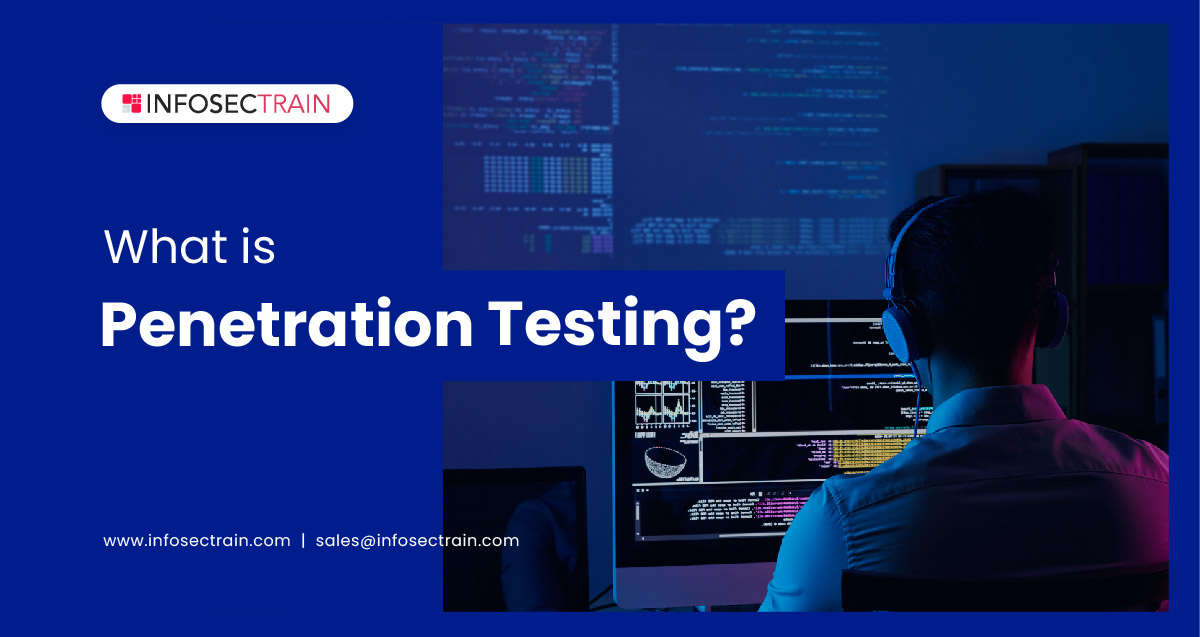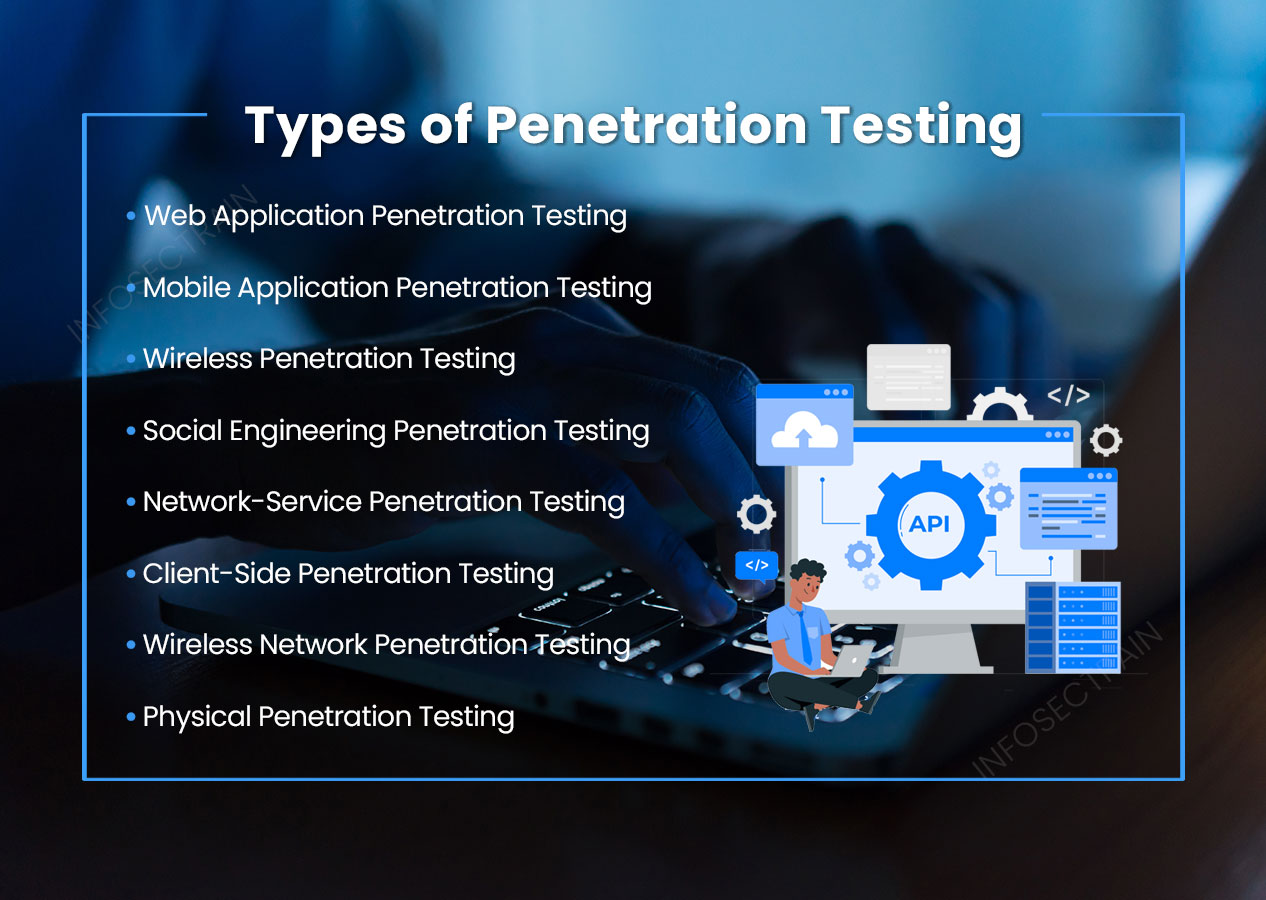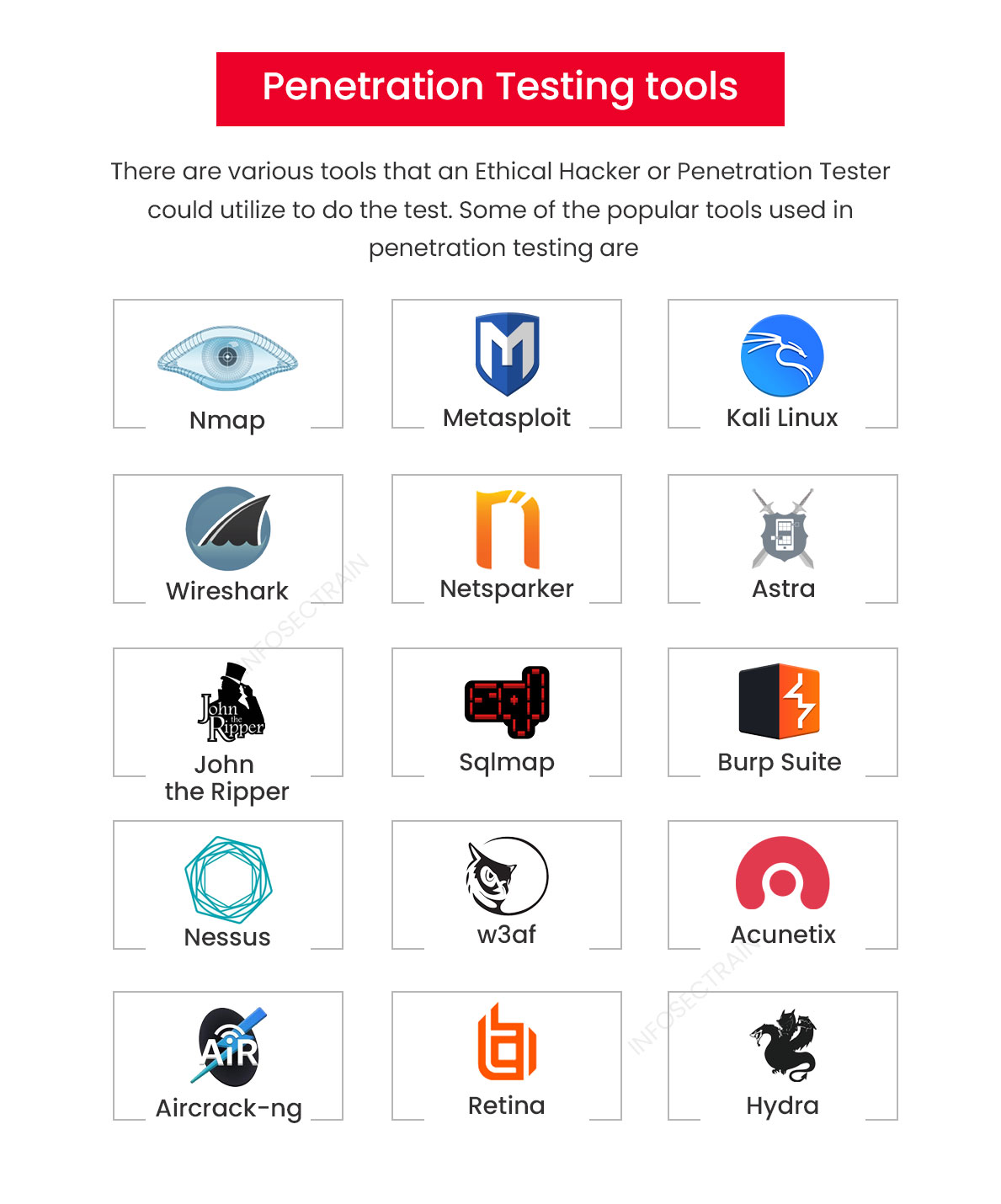What is Penetration Testing?
Given the rising frequency and severity of cyberattacks, Penetration Testing has become a crucial component of a comprehensive security program. However, for some who are unfamiliar with the phrase, it might be a confusing concept. Therefore, we have attempted to provide a general overview of Penetration Testing in this post, including its process and purpose. Continue to read if you desire to know more.

Table of Contents
What is Penetration Testing?
Why is Penetration Testing necessary?
Penetration Testing approaches
Ways to perform a Penetration Test
What are the stages of Penetration Testing?
Skills required for Penetration Testing
Is Penetration Testing worth it?
When is Penetration Testing required?
Is Penetration Testing the same as vulnerability assessment?
Is Penetration Testing a good career?
What is Penetration Testing?
Penetration Testing or Pen Testing is a type of security testing in which an Ethical Hacker or Penetration Tester performs a simulated cyberattack on systems or an entire IT infrastructure to uncover exploitable vulnerabilities or loopholes before a malicious hacker could exploit them. The targets vulnerable to your primary attack vectors may include operating systems, network equipment, application software, personnel, and other IT resources. The primary objective of Penetration Testing is to identify and secure vulnerabilities before cybercriminals or malicious hackers exploit them.
Why is Penetration Testing necessary?
Penetration Testing has never been more crucial with the increase in various sophisticated tactics used by cybercriminals like social engineering, ransomware, and others to exploit our digital environment. Understanding your strengths and limitations is the initial step to a good defense. Penetration Testing offers intelligence and insights into how to mature your organization’s security by knowing how you could be attacked and are likely to be attacked as well as what activities you need to take to safeguard your organization.
Some of the benefits of conducting Penetration Testing are listed below:
- It helps identify security vulnerabilities before a malicious hacker can exploit them.
- It helps in prioritizing risks.
- It helps prevent costly data breaches.
- It helps identify real risks and manage them.
- It tests your organization’s cyber defense capabilities.
- It ensures and increases business continuity.
- It helps maintain compliance with industry standards and regulations.
- It helps maintain customer trust and brand image.
- It uncovers poor internal security policies.
Penetration Testing approaches:
- White-Box Penetration Testing: In White-Box Penetration Testing, the Penetration Tester is given complete access to the target’s IT infrastructure and other resources, including network maps, credentials, and more. It is helpful for modeling a targeted attack using as many attack pathways as feasible on a particular system. It aids in time savings and lowers overall Penetration Testing engagement costs. It is also known as Crystal or Oblique Box Penetration Testing.
- Black-Box Penetration Testing: In a Black-Box Penetration Testing, the Penetration Tester receives absolutely no knowledge about the target’s IT infrastructure or other resources. In this instance, the Penetration Tester imitates a malicious attacker’s strategy from initial access and execution until exploitation. This strategy makes it easier to show how an opponent without inside information may target and compromise an organization. However, it is a time-consuming approach.
- Gray-Box Penetration Testing: In Gray-Box Penetration Testing, the Penetration Tester is given some knowledge about the target’s IT infrastructure and other resources. Understanding the degree of access a privileged person might acquire and the possible harm they might do is helpful. It can be used to simulate either an insider threat or an attack that has breached the network perimeter, striking a balance between depth and efficiency. It is also known as Translucent Box Penetration Testing.
Ways to perform a Penetration Test:
- Automated Penetration Testing: It is the practice of automatically identifying vulnerabilities using a variety of open-source and commercial Penetration Testing tools.
- Manual Penetration Testing: It is the evaluation of a target’s security infrastructure by a skilled security professional or team of security specialists.
What are the stages of Penetration Testing?
There are many stages in the Penetration Testing process depending on the methodologies used. The general phases are:
- Pre-engagement (planning and scoping): The initial step in a Penetration Testing process is to define the scope and goal of Penetration Testing since every Penetration Test is unique. Here, they make all the decisions about the process, such as the systems allowed for testing, the methodologies, and more. Each Penetration Test’s scope is determined before the assessment, and the tests are carried out in accordance with that.
- Information gathering: In this stage, the Penetration Tester or Ethical Hacker gathers as much information about the target system as possible. It is also known as fingerprinting and reconnaissance.
- Vulnerability assessment: In this stage, the Penetration Tester does a vulnerability assessment to better understand its targeted system after gathering information about the target. Understanding how the target application will react to different intrusion attempts is also helpful. They use automated tools for vulnerability assessment like Nessus, Rapid7, etc.
- Exploitation: In this stage, Penetration Testers employ their skills to attack and exploit target resources to find security vulnerabilities. They gain and maintain access to the target using a variety of methods like cross-site scripting, SQL injection, social engineering, and backdoors. It helps in determining the potential harm that a vulnerability might cause.
- Post-exploitation: In this stage, the Penetration Tester cleans up all malware, backdoors, codes, accounts, tools, etc., that were installed or created throughout the Penetration Testing process. They exploit the vulnerabilities to achieve their objectives of data exfiltration, modification, or functionality abuse.
- Reporting: This is the last stage of the Penetration Testing process. During this stage, Penetration Testers compile and present a thorough report on their findings and recommendations for eliminating threats. This helps businesses develop security patches for discovered vulnerabilities and other methods to strengthen their overall security posture.

Skills required for Penetration Testing:
- Knowledge of networking
- Deep understanding of operating systems like Windows, Linux, and macOS
- Programming languages
- Good grasp of wireless protocols and devices
- Good communication skills, especially technical writing and documentation
- Knowledge of security assessment tools

Is Penetration Testing worth it?
Through Penetration Testing, you can learn about your cybersecurity posture from the viewpoint of a criminal. It is carried out by experts who will make use of their discoveries to enhance your organization’s general cybersecurity posture. Therefore, if you have the time and resources, a Penetration Test can help you identify security vulnerabilities and improve your security posture.
When is Penetration Testing required?
Any software or system should ideally be tested before being used in production. Penetration Testing should, therefore, generally be carried out just before a system is put into production once the system is no longer undergoing constant development. Additionally, frequent Penetration Testing should be carried out at least once a year.
Is Penetration Testing the same as vulnerability assessment?
People frequently believe that vulnerability assessment and Penetration Testing are the same concepts. However, vulnerability assessments and Penetration Testing are not the same. A vulnerability assessment largely consists of a security scan and evaluation, whereas a Penetration Test simulates a cyberattack and exploits weaknesses found.
Is Penetration Testing a good career?
The sophistication of cybercriminals in carrying out cyberattacks has increased with the development of technology in the digital era in which we live. In order to find organizational vulnerabilities and enhance their security posture, firms need qualified individuals that can carry out efficient Penetration Testing. For those with good problem-solving, IT, and computer skills, it can be a great career choice that pays well. The national average compensation for a Penetration Tester in the United States is $1,02,405 per year, according to Glassdoor.
How can InfosecTrain help?
A thorough Penetration Test will give you full knowledge of the organization’s overall security posture and, more significantly, will show you how to prioritize and fix any vulnerabilities discovered during the test to strengthen the organization’s security posture. As a result, enterprises have increasingly adopted Penetration Testing as a security strategy in recent years.
TRAINING CALENDAR of Upcoming Batches For CEH v13
| Start Date | End Date | Start - End Time | Batch Type | Training Mode | Batch Status | |
|---|---|---|---|---|---|---|
| 06-Apr-2025 | 24-May-2025 | 09:00 - 13:00 IST | Weekend | Online | [ Close ] | |
| 26-Apr-2025 | 01-Jun-2025 | 19:00 - 23:00 IST | Weekend | Online | [ Close ] | |
| 11-May-2025 | 28-Jun-2025 | 09:00 - 13:00 IST | Weekend | Online | [ Open ] | |
| 31-May-2025 | 06-Jul-2025 | 19:00 - 23:00 IST | Weekend | Online | [ Open ] |
Join one of InfosecTrain’s many training courses if you want to learn everything there is to know about Penetration Testing in-depth. These courses are crafted to provide you with the skills and knowledge you need to execute a successful penetration test. Visit our website to learn more about the many Penetration Testing courses we provide, including CEH, CompTIA PenTest+, Network Penetration Testing, Advanced Penetration Testing, Web Application Penetration Testing, Active Directory Penetration Testing, and other security testing courses.
We also offer customized courses like the Pen Tester combo training course to prepare you for a lucrative career in Penetration Testing.
TRAINING CALENDAR of Upcoming Batches For APT with KALI Linux
| Start Date | End Date | Start - End Time | Batch Type | Training Mode | Batch Status | |
|---|---|---|---|---|---|---|
| 04-May-2025 | 21-Jun-2025 | 09:00 - 13:00 IST | Weekend | Online | [ Open ] |









 1800-843-7890 (India)
1800-843-7890 (India)